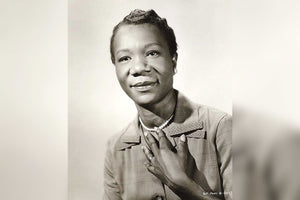Birthday – September 12, 1897
Who is Irene Joilot Curie?
Irene Joliot-Curie is known as one of the most famous French chemists and physicists in the world. Not only is she a scientist, but she is also a Polish politician. She is the daughter of Pierre and Marie Curie. She is also married to Frederic Joliot-Curie. Along with her husband, she received a Nobel Prize in Chemistry during the mid thirties for her and her husband’s discovery of artificial radioactivity. That’s why the Curie family became one of the most prestigious families in the field of science. Other than that, she also became one of the first women to be a part of the French Government. She became the undersecretary for Scientific Research under the Popular Front.
In the mid forties, she eventually became one of the commissioners of the French Alternative Energies and Atomic Energy Commission. Her children Pierre and Helene also followed in their parents’ footsteps and also became really famous scientists.
Five Facts about Irene Joilot Curie
- Curie passed away from acute leukemia caused by radioactive exposure
- During her time as a nurse in the war, she was awarded a military medal in France and Belgium
- Irene and her husband were the first people to discover the calculation of the mass of a neutron
- Irene was an atheist and was against war
- Frederic and Irene had some close ties with the Communist Party
Inspirational Quotes from Irene Joilot Curie
“That one must do some work seriously and must be independent and not merely amuse oneself in life-this our mother [Marie Curie] has told us always, but never that science was the only career worth following.”
“The farther the experiment is from theory, the closer it is to the Nobel Prize.”
“Things are just the same as they always were, only you’re the same as you were, too, so I guess things will never be the same again. Goodnight.”
“For my part, I consider science to be the paramount interest of my life.”
“The time necessary for the disappearance of half the atoms, called the half-life, is a fundamental characteristic of each radio-element; according to the substance, the value of the half-life varies between a fraction of a second and millions of years.”
Irene Joilot Curie Biography
Early Life
Irene was born in the year 1897 and was the eldest daughter of Maire and Pierre Curie. In the early 1900s, Irene’s father died due to a wagon accident and Marie raised their children by herself. It was also during this time that she discovered her talent in mathematics. When her mother discovered this, she had Irene pursue a specialization in math studies instead of sending her to a public school. Eventually, Irene, along with sister Eve, was sent over to Poland. During her high school years, she studied in College Sevigne in Paris until the year of 1914. Eventually, the first World War started in 1916 and her studies were put at a halt.
Turning Point
During her college years, she took up nursing so that she can help her mother as a field assistant. She worked as a radiographer in the war with her mother. She eventually went to work at a radiology center in Belgium. She was the one who taught doctors to use radiology to look for bullets in the bodies. She then continued her studies in Paris. She officially became a Doctor of Science in 1925 where she taught precision lab techniques in Radium Institute. That’s where she met her future husband Frederic Joliot Curie. That’s where they both combined their expertise to study the atomic nuclei. They continued as a great team until they eventually had a breakthrough being the first scientists to calculate accurately the mass of the neutron.
Mission and Work
From there, they were able to develop a theory about how only protons change into neutrons and positrons. They then presented the theory to the Seventh Solvay Conference. Unfortunately, a number of scientists in the panel criticized the theory because of its controversy. But they did build on the controversy to get their names known in the scientific community.
In the late forties, the couple then became a part of the Atomic Energy Commission or the Commissariat a l’energie atomique wherein Irene became the commissioner and her husband became the director. Aside from her scientific career, she was also very active in politics. She was also a part of the Comité de vigilance des intellectuels antifascistes. Up until today, her works and her contributions are well-known in the field of science as well as the field of politics.
Legacy
The legacy of Irene Curie echoed throughout the entire scientific community. Being born in a family of scientists, she was surely destined to become a famous one as well. In fact, her children also became really well-known scientists contributing even much more to the field of physics and chemistry.
![]() Fast Shipping
Fast Shipping![]() Subscribe to our Newsletter
Subscribe to our Newsletter![]() 🌟 New Global Competition 🌟
🌟 New Global Competition 🌟















